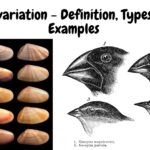O Level Biology 43 Views 1 Answers
Sourav PanLv 9November 3, 2024
State that electrical impulses travel along neurones
State that electrical impulses travel along neurones
Please login to save the post
Please login to submit an answer.
Sourav PanLv 9May 15, 2025
Electrical impulses travel along neurons, which are specialized cells in the nervous system. These impulses, also known as nerve impulses or action potentials, are essential for communication within the nervous system and between the nervous system and other parts of the body.
How Electrical Impulses Travel
- Dendrites: The process begins when sensory receptors or other neurons stimulate the dendrites of a neuron. Dendrites receive incoming signals and convert them into electrical impulses.
- Cell Body: The electrical impulse is then transmitted to the cell body (soma) of the neuron, where it is processed. If the signal is strong enough, it triggers an action potential.
- Axon: The action potential travels down the axon, a long, slender projection that conducts electrical impulses away from the cell body. The axon may be covered by a myelin sheath, which increases the speed of impulse transmission by allowing the impulse to jump between gaps known as nodes of Ranvier.
- Axonal End: Finally, when the electrical impulse reaches the axonal end (axon terminal), it triggers the release of neurotransmitters into the synaptic cleft, allowing communication with adjacent neurons or effectors (muscles or glands).
This process ensures rapid and efficient transmission of information throughout the nervous system, enabling responses to stimuli and coordination of bodily functions.
0
0 likes
- Share on Facebook
- Share on Twitter
- Share on LinkedIn
0 found this helpful out of 0 votes
Helpful: 0%
Helpful: 0%
Was this page helpful?




